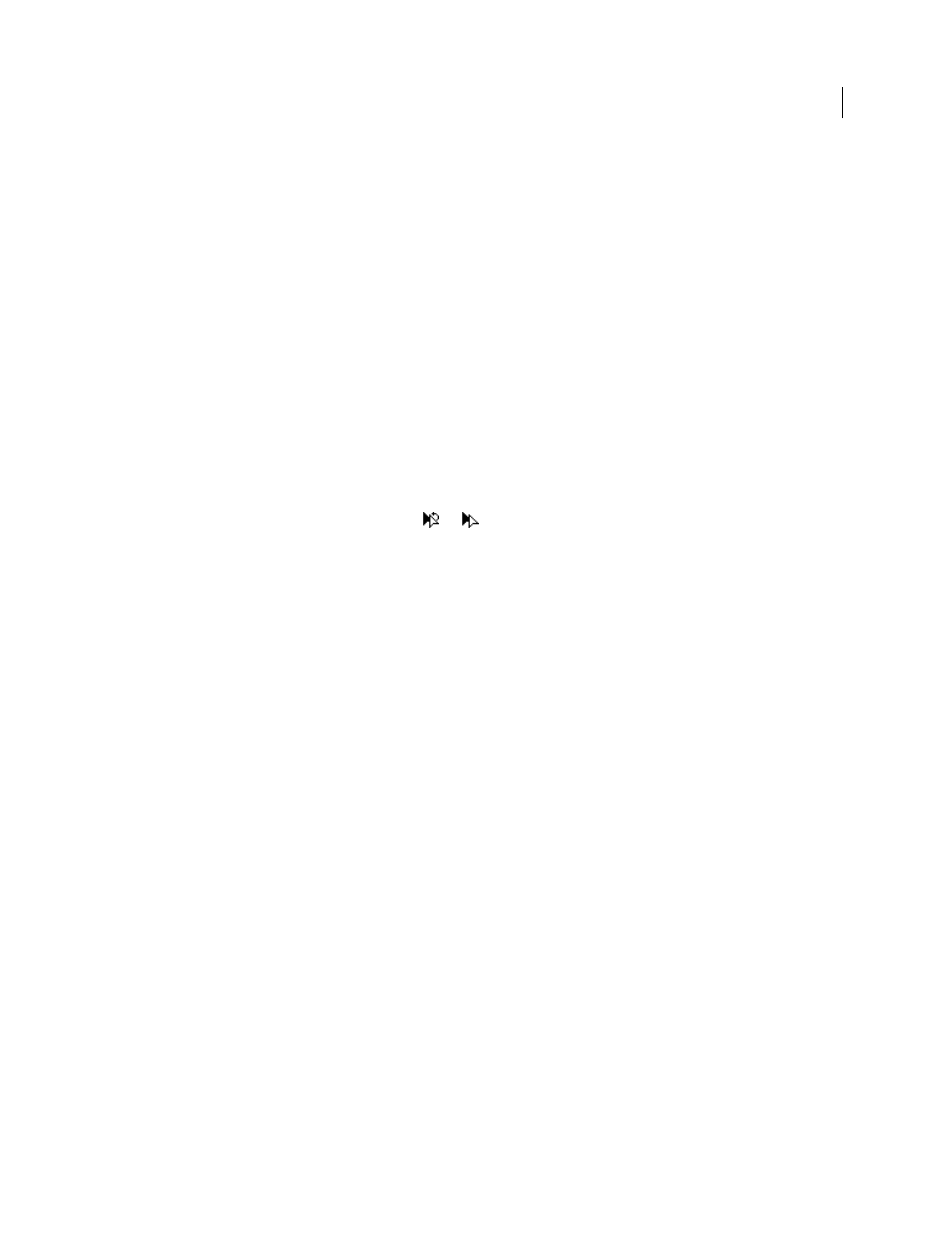Create a shape path from a motion path, Duplicate a shape group while transforming, Managing and animating shape paths and masks – Adobe After Effects CS4 User Manual
Page 328: Rotoscoping introduction and resources, Rotoscoping, Introduction and resources

322
USING AFTER EFFECTS CS4
Drawing, painting, and paths
Last updated 12/21/2009
Create a shape path from a motion path
1
In the Timeline panel, click the name of the Position property or Anchor Point property from which you want to
copy the motion path. (This selects all keyframes. To select only some of the keyframes of a motion path, Shift-click
them.)
2
Choose Edit > Copy.
3
To create a new shape layer, press F2 to deselect all layers, then click in the Composition panel with the Pen tool to
create a single-point Bezier path.
4
Press SS to reveal the Path property for the shape. Click the name of the Path property into which to paste the
keyframes from the motion path.
5
Choose Edit > Paste.
Duplicate a shape group while transforming
When a shape group is selected in group selection mode, you can duplicate the group while moving, rotating, or scaling
it in the Composition panel.
•
Hold the Alt (Windows) or Option (Mac OS) key as you drag to transform a group.
The pointer changes to a duplication pointer (
or
) as you hold the key and place the pointer near the group
transform box.
More Help topics
Select a shape group in group selection mode
Managing and animating shape paths and masks
You animate mask paths and shape paths in much the same way that you animate other properties: set keyframes for
the Mask Path or Path property, set paths at each keyframe, and After Effects will interpolate between these specified
values.
Rotoscoping introduction and resources
Rotoscoping (or just roto in casual usage) is the drawing or painting on frames of a movie, using visual elements in the
movie as a reference. A common kind of rotoscoping is tracing a path around an object in a movie and using that path
as a mask to separate the object from its background. This allows you to work with the object and the background
separately, so you can do things like apply different effects to the object than to its background or replace the
background.
Note: If a background or foreground object is a consistent, distinct color, you can use color keying instead of rotoscoping
to remove the background or object. If the footage was shot with color keying in mind, color keying is much easier than
rotoscoping. (See “
Keying introduction and resources
Rotoscoping in After Effects is mostly a matter of drawing masks, animating the mask path, and then using these masks
to define a matte. Many additional tasks and techniques make this job easier, such as using motion tracking on the
object before you begin drawing masks, and then using the motion tracking data to make a mask or matte
automatically follow the object.
